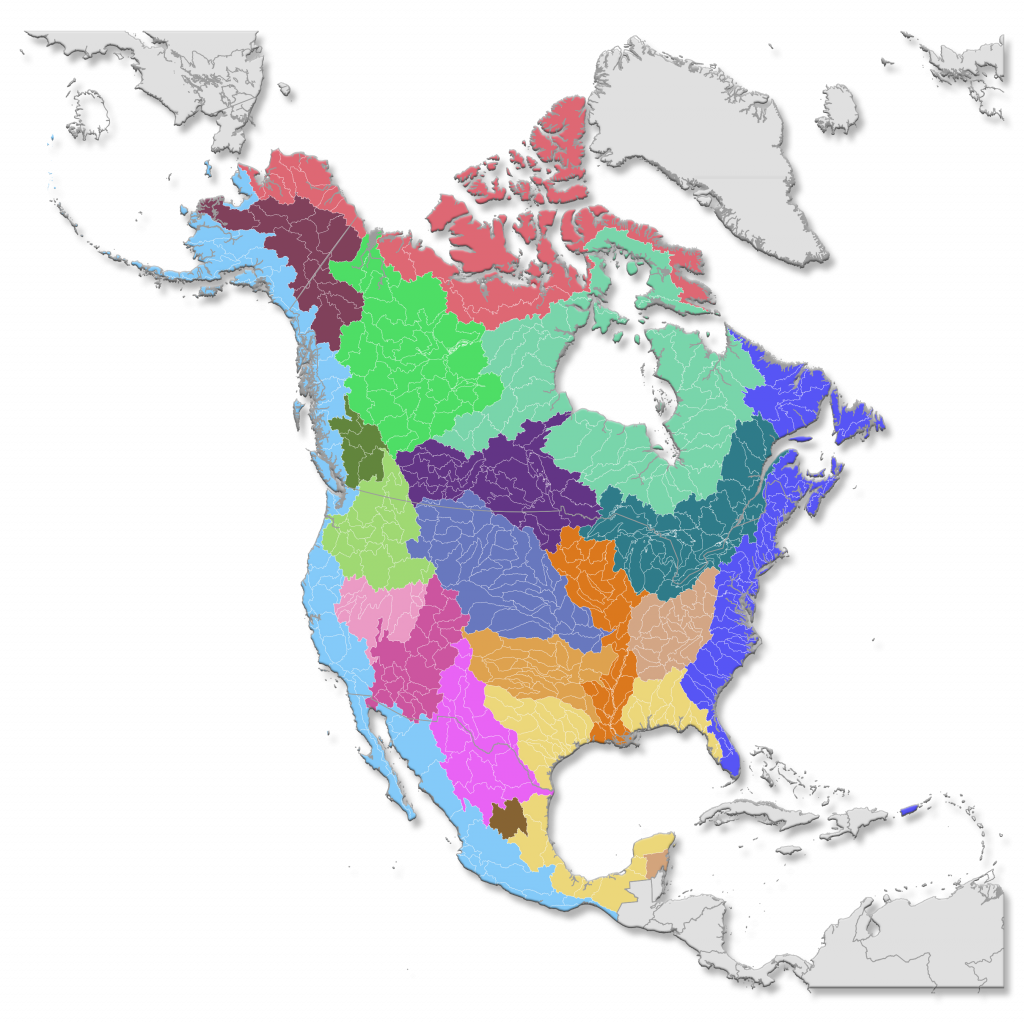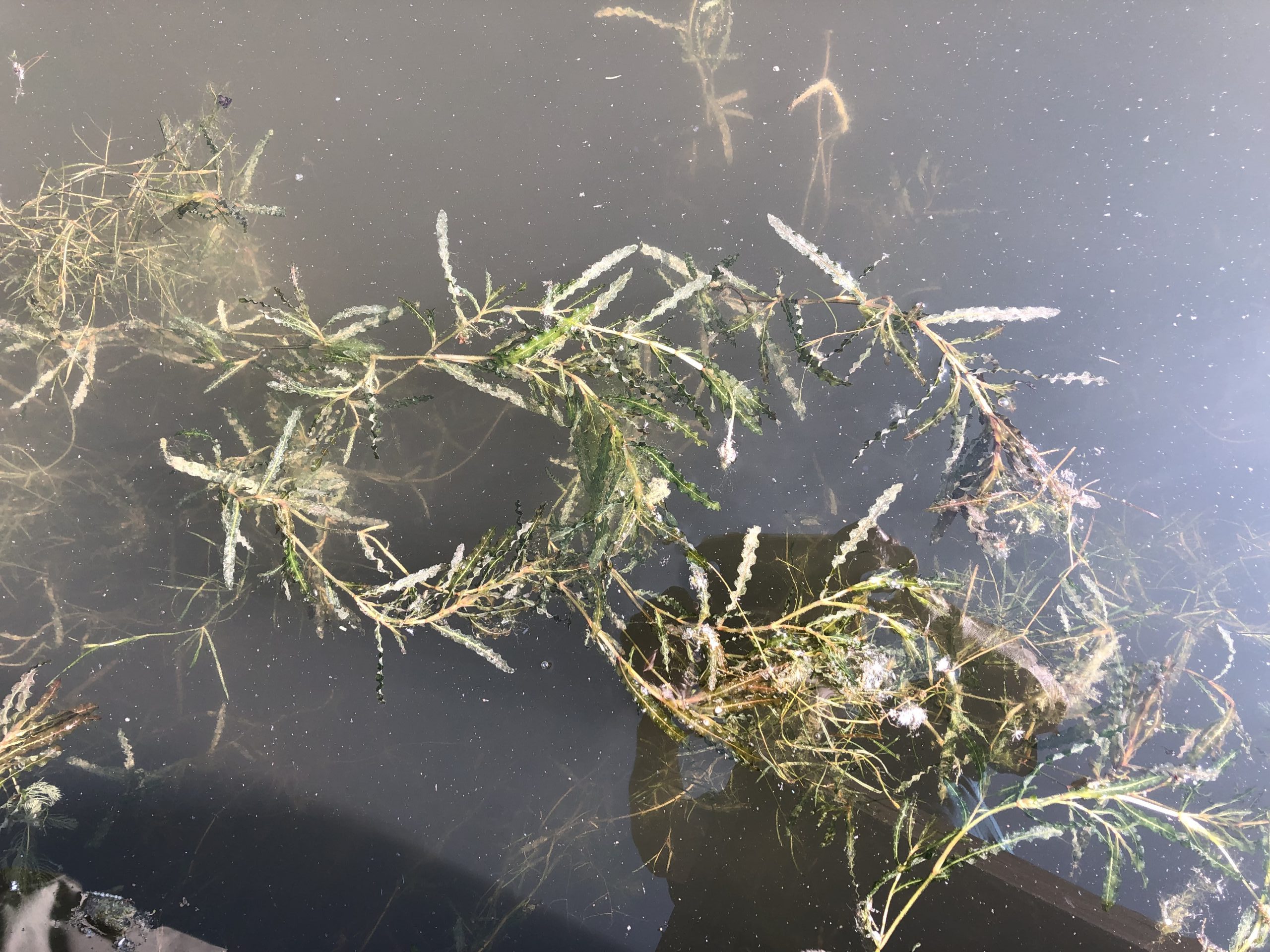How nutrients enter a lake, and how to limit them
Streams gather nutrients from land and eventually empty their loads into lakes.
Nutrients are important for aquatic ecosystems, but how do they get to the lake in the first place? Aside from internal loading, there are many opportunities for external loading. That happens when nutrients enter a body of water from the land around it. External loading sources are ones we can help limit so our lakes don’t get too many nutrients!
How does a lake get nutrients?
Every time water washes over land, nutrients are pushed into a nearby body of water — often a stream.
The stream gathers nutrients as it flows, but it doesn’t hold onto them for very long. It eventually empties them into the first lake it enters. (This can happen over the course of several streams, one emptying into the next.)
As it flows, a stream carries nutrients in a variety of ways.
Sometimes nutrients bind to other materials, like sediment or eroded soil from a streambank. Sometimes they come in the form of branches, leaves or grass. As they decompose, these organic materials release nutrients over time. Decomposition tends to happen when they reach a larger body of water such as a lake.
Note: Certain kinds of nutrients like phosphorus and nitrogen can be inorganic or organic. This means they can show up in a bag of fertilizer or be released from a decomposing plant. Regardless, aquatic ecosystems need limited amount of these nutrients to thrive.
Streams that are full of nutrients tend to load lakes with large amount of nutrients. Sometimes this happens quickly, such as during a strong thunderstorm. Other times it happens more gradually, as lawns are watered or a streambank erodes.
Regardless, the whole process is dependent on something called a watershed!

What is a watershed?
You may not live on a lake, but you will always live in a watershed.
A watershed is an area of land that collects runoff (from rain, sprinklers, flooding, etc.) and drains it to streams and rivers, which all flow to a larger body of water such as a lake. If you live on a shoreline, the process is accelerated. Runoff from your property will likely flow directly into the lake.
More broadly, watersheds include groundwater as well as surface water. Sometimes large watersheds can contain small watersheds, too. The USGS uses this example to show how much water can be collected by a watershed in an average rainfall:
Imagine that the whole basin is covered with a big (and strong) plastic sheet. Then if it rained one inch, all of that rain would fall on the plastic, run downslope into gulleys and small creeks and then drain into the main stream. Ignoring evaporation and any other losses, and using a 1-square mile example watershed, then all of the approximately 17,378,560 gallons of water that fell as rainfall would eventually flow by the watershed-outflow point.
Over 17 million gallons of water! Without that impossibly large plastic sheet, however, part of the rain is absorbed by the ground while the rest flows over it. And as it flows, the water collects things ー including nutrients.
What kind of nutrients contribute to the “nutrient load” of a stream?
Two types of nutrients you’ve probably heard about are phosphorus and nitrogen.
Phosphorus is vital for plants and therefore a main ingredient in most fertilizers. It’s also the most influential nutrient in aquatic ecosystems, along with nitrogen. Nitrogen can be in the form of a gas that has no taste, color or smell, making up 78% of the earth’s atmosphere. Nitrogen can also be found in soil and in water and is equally important for aquatic plant life.
A stream receives nutrients, such as phosphorus and nitrogen, from its watershed.
One way to measure the level of nutrients in a stream is to calculate its load. A stream load is how much nutrient content the stream carries over a certain amount of time (for example, five pounds of phosphorus per week.) The Lilly Center is currently researching the stream loads of 12 inflowing and outflowing streams around 14 local lakes. We use our stream sensors, bi-weekly stream sampling, and summer lake sampling to get a complete picture of what enters and leaves the lakes. Identifying which sources contribute the most nutrient allows us to target those areas for good management!
Regardless, stream loads have to be deposited somewhere. Most often, they end up in a lake.
As a stream flows into a lake, it contributes to the lake’s nutrient loading (such as 1000 pounds of phosphorus per year.) Those nutrients are then used by aquatic plants, sometimes to the detriment of the lake and your enjoyment of it. Reducing nutrients will increase the lifespan of the lake, too.
By now, you’ve probably noticed the domino effect! Nutrients from a watershed end up in a lake, whether directly or through streams, and support aquatic ecosystems. When lakes receive too many nutrients, that leads to excess weeds and algae.
The good news is that, over time, we can optimize our watersheds to keep more phosphorus and nitrogen from eventually entering the lakes.
Steps you can take to help your watershed and protect your lake
While it might seems like a daunting task, watershed management starts with simple decisions.
- Take our land management survey! All responses are anonymous and will be used in Lilly Center research as we study stream loads.
- Observe what happens on your property. Do you use some fertilizer or none at all? Do you clean up after pets? Do you wash your car in your driveway or take it to the car wash? Think about it this way: Anything that lands on your property has the potential to end up in local waterways.
- What kind of landscaping plants do you use? Switching to native plants is easier than it might seem. There are several local nurseries who are happy to help.
You can also get involved by attending a Lilly Center event or teaming up with your own lake association!

Why do nutrients cause algae and weeds to grow?
Nutrients, specifically phosphorus and nitrogen, act as stimulants for aquatic plants. Aided by excess nutrients, weeds and algae can become out of balance with other plants and animals, overwhelming wildlife habitats, stifling native species and blocking sunlight from entering the lake.